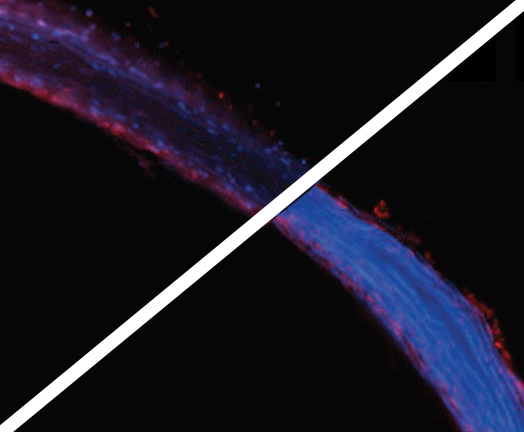Organs and tissues for transplant are usually cooled to slow down metabolism and keep them viable during transport and storage. However, even at low temperatures, tissues still use some oxygen and the resulting oxygen deficiency (hypoxia) can cause damage. Hence, oxygen supply is one of the major challenges during organ preservation.
Jake Barralet and colleagues, McGill University, Montreal, QC, Canada, have developed a microparticulate oxygen-generating biocomposite with sustained oxygen release for blood vessel preservation. The team mixed calcium peroxide CaO2 and MnO2 with a degradable hydrophobic polycaprolactone (PCL) in chloroform. Then they added the suspension to a mixture of glycerol and polyvinyl alcohol. The resulting microspheres were collected by centrifugation and dried at room temperature.
Calcium peroxide reacts with water and rapidly produces oxygen and hydrogen peroxide. The PCL reduces the reaction to provide a slower, sustained O2 release. The microspheres were combined with an alginate hydrogel to reduce the diffusion of generated O2 and H2O2. MnO2 acts as a catalyst for the decomposition of the potentially harmful H2O2.
The researchers tested the composite using rat aorta segments (pictured). For blood vessels cultured under hypothermia for 25 days in a preservation medium, the material increased cell viability from ca. 9 % to ca. 96 %. When the vessels were stored for seven days at physiological temperature under an oxygen-free atmosphere, the composite increased the cell viability from ca. 45 % to ca. 78 %. According to the team, oxygen release materials could, thus, play a role in improving current preservation techniques.
- Preservation of Blood Vessels with an Oxygen Generating Composite,
Huaifa Zhang, Benjamin Dalisson, Simon Tran, Jake Barralet,
Adv. Healthcare Mater. 2018.
https://doi.org/10.1002/adhm.201701338



